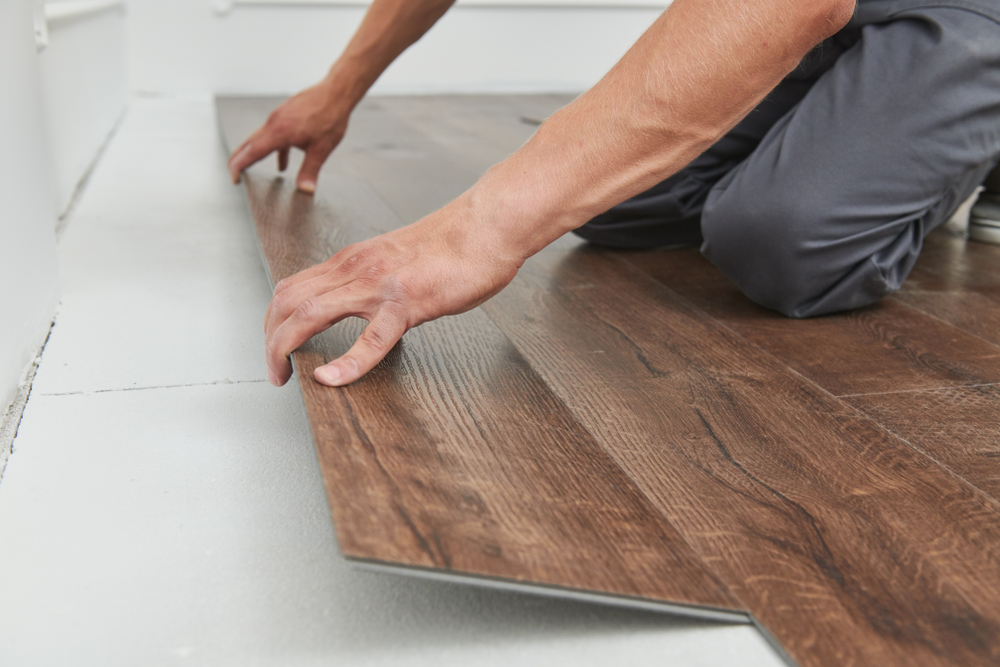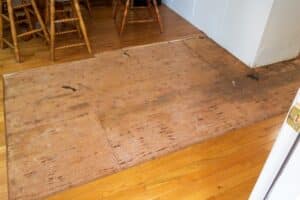Water damage can ruin walls, ceilings, flooring, and several other parts of your property. It doesn’t take much—spills, leaks, flooding, or burst pipes can all produce expensive and sometimes irreversible damage to materials.
This can be especially true for laminate flooring. Although laminate can handle small amounts of water, allowing water to linger or ignoring its source can end in disaster. Once water damage strikes your flooring, you need to act fast to mitigate the damage or make repairs. Here is a guide to fixing water-damaged laminate flooring.
Table of Contents
5 Steps to Repair Water Damage on Laminate Floors
-
Stop The Water From Causing More Damage
Before you can repair the damage, you need to stop water from furthering it. Start by finding the source of water. If the cause of water damage is something like an appliance leak or burst pipe, you need to shut off the flow of water.
-
Wipe Up Remaining Water
Any water on the surface of your laminate flooring needs to be wiped up and dried immediately. The longer water is allowed to sit on laminate, the greater risk you take of it permanently damaging it. Ensure you’ve cleaned and dried all affected boards and stopped whatever was causing the damage before moving on to repairs.
Read More: How to Dry Your House After a Flood
-
Inspect for Damaged Planks
Now that the water is cleaned and dried and you’ve stopped the flow of water, you can begin checking for damaged planks. Look for visual damage or changes to your laminate flooring, like discoloration, buckling, or general misshapenness.
Another good trick for identifying possible damage is walking on the planks. If you feel it moving a bit, there’s likely water underneath. Take your time inspecting the entire area to ensure you don’t miss something that could lead to more damage later.
-
Remove Damaged Planks
Once you’ve identified which planks are water damaged, it’s time to remove them. Unfortunately, many cases of water damage cannot be simply reversed. Once laminate flooring has absorbed too much water, your only option is to replace them.
Most damaged planks can be removed by hand or with minimal tool use. However, some planks may be a bit more difficult to remove. For those, use a tool or strong knife that can get under the laminate boards and lift from underneath.
-
Call a Professional Water Damage Restoration Company
If you’re unable to remove water-damaged laminate flooring, don’t hesitate to call a water-damage restoration company like CTR. Our team is experienced in a wide range of water damage causes and knows what to look for. They can repair and revive your flooring professionally, saving you from the stress of a DIY project.
Can Mold Grow Under Laminate Floors?
This is where doing a thorough check comes in handy. If water is left under the laminate flooring, it can spur mold growth. If left untreated for a full 24 hours, mold growth can start. Ensure you take the inspection and water drying processes seriously to avoid moldy flooring.
Read More: What is White Mold? And How to Remove it
Water Damage on Your Floors? Contact the Experts
When water damage ruins your laminate flooring, you don’t need to worry about fixing it yourself. Skip the DIY stress and call our certified technicians any time or day, any day of the week. Our team can restore your property and your peace of mind. Give us a call today at (208) 377-1877, or contact us online for a free estimate.









